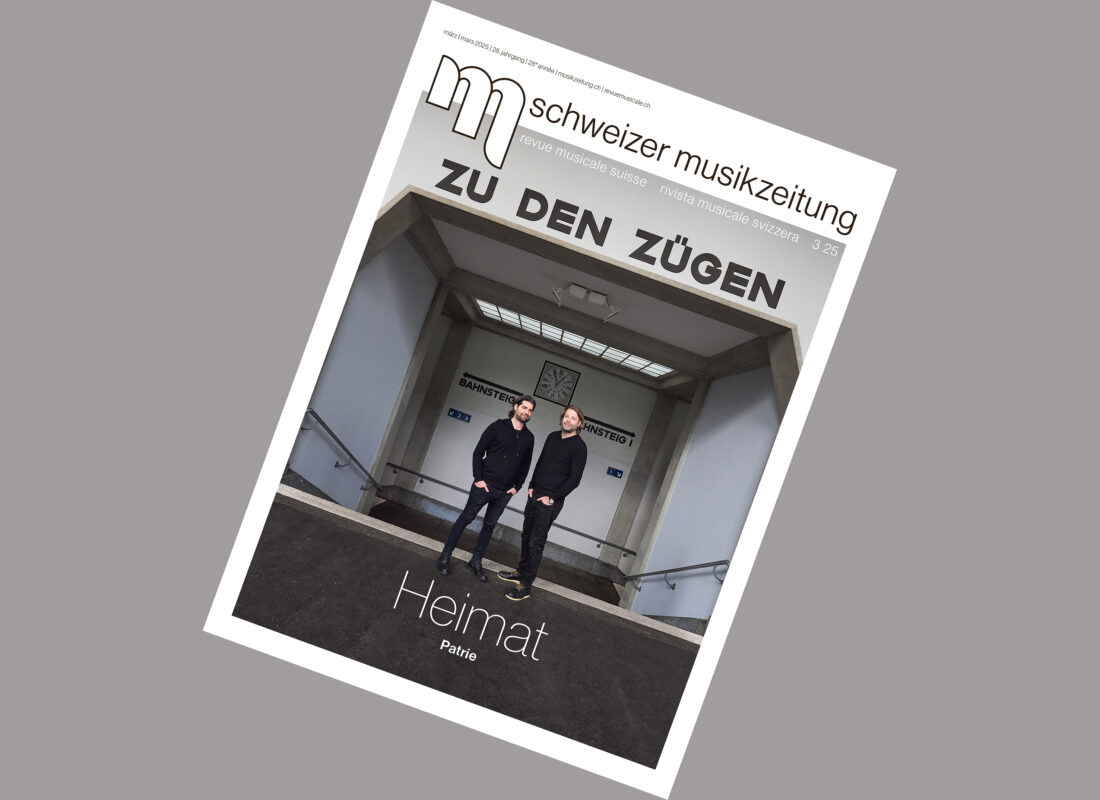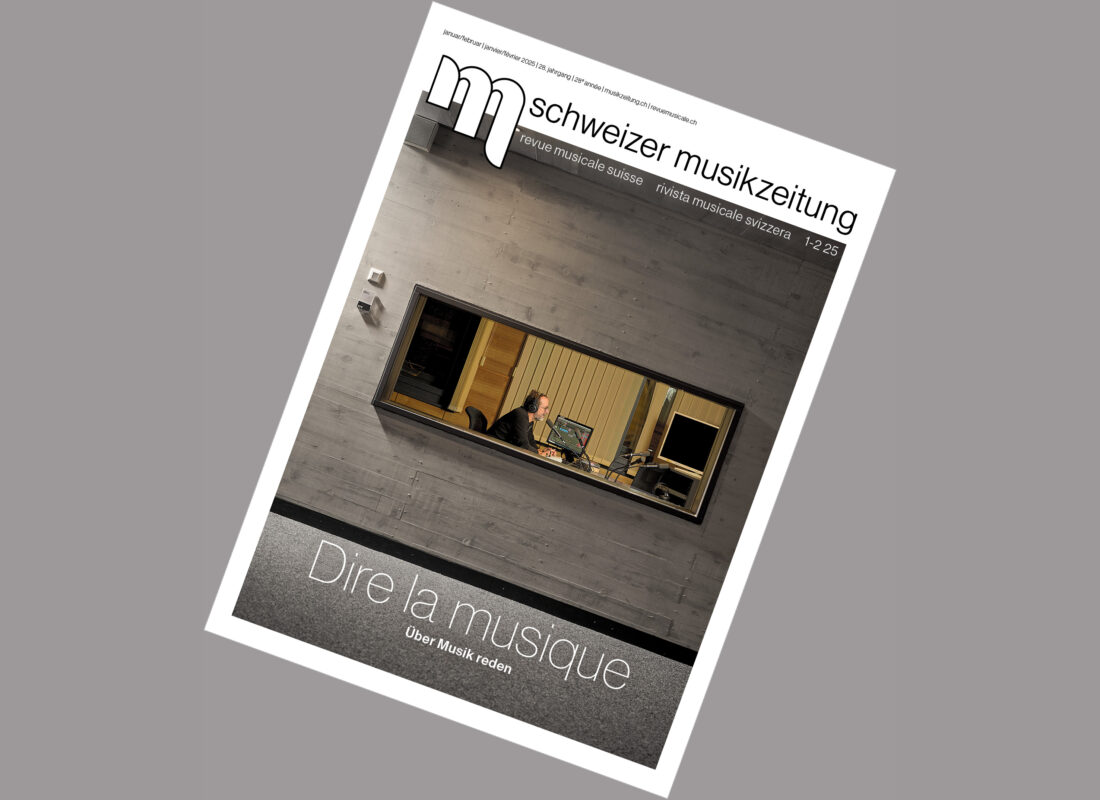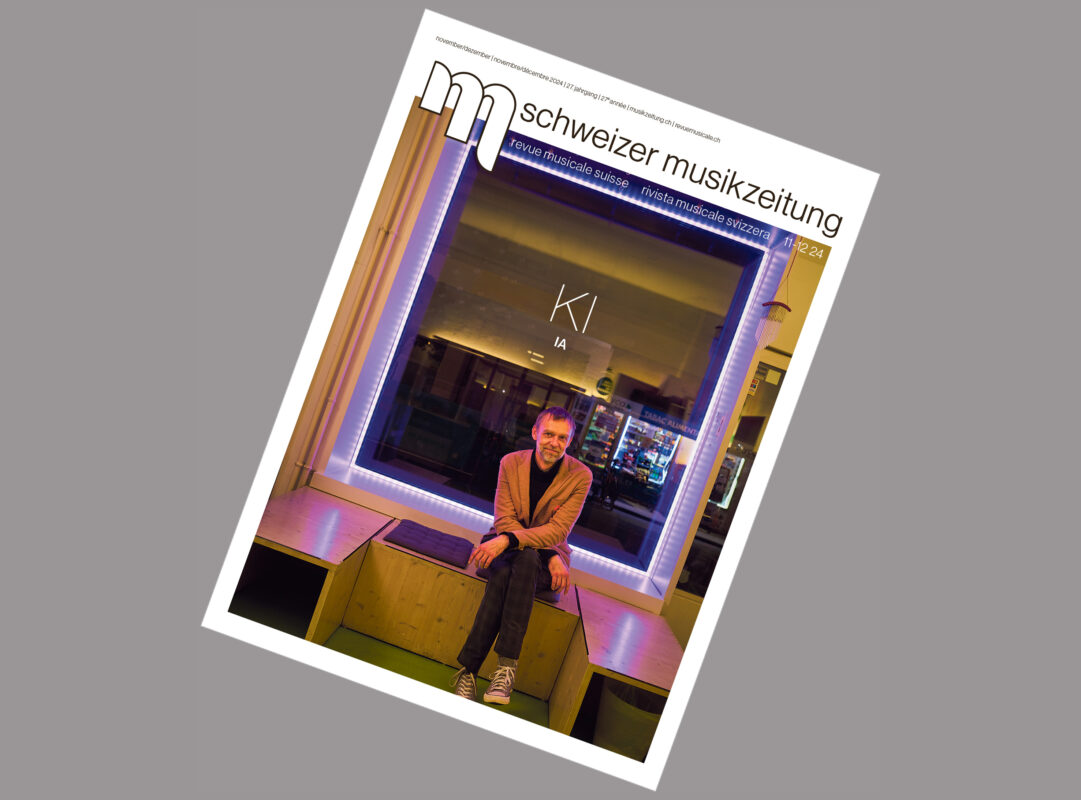Sheep on stage and in the media
On the marketing of new music in America using the example of Louis Andriessen's stage work "De Materie".


On the marketing of new music in America using the example of Louis Andriessen's stage work "De Materie".
At the end of March, in New York, sheep were bleating on the opera stage. Their almost omnipresent presence in the newspapers, on social networks, even in everyday conversations of all kinds, made it almost impossible to avoid them. As they only played a small role in the production of Louis Andriessen's De Matter their dominance in the New York media seemed surprising. However, this example is indicative of the American approach to new music.
The fact that sheep wandered across the stage should not have been so remarkable. However, the occasion was the reopening of the recently renovated Armory. The acting animals appeared in Heiner Goebbels' production of the anti-opera, which was created for the Ruhrtriennale in 2014. De Matter is a piece by the composer Andriessen, often performed in the USA, which had its American premiere ten years earlier. At that time, however, the New York Philharmonic performed it in concert, which made the new production of the piece, written between 1985 and 1988, an exciting happening. The New York Park Avenue Armory acquired the production - the second staged performance of the play since Robert Wilson premiered it at Amsterdam's Muziektheater in 1989. Goebbels had conceived his production for the Kraftzentrale Duisburg with the Ensemble Modern Orchestra and the ChorWerk Ruhr under the direction of Peter Rundel. Now it was time to consider how the production from the Ruhr could be staged in the Armory and adapted to New York and the New York audience.
Proven marketability
ChorWerk Ruhr and the conductor also performed in New York. However, the young International Contemporary Ensemble, which was also heard in Darmstadt this year, replaced the Ensemble Modern Orchestra. Goebbels' static, visually rich production and Andriessen's equally static four-part work lent themselves to a spectacular advertising campaign, a perfect union of the powerful symbolism of Goebbels' work with the magnificent grandeur of the Armory built in the 19th century. The Gilded Age is expressed in 2016 in the form of highly educated New York hipsters, for whose need for bourgeois showmanship the east side of New York is better suited than the Met, located on the other side of the park. In this regard, a review of the performance in the Wall Street Journal explicitly: "The Park Avenue Armory has also become a home of the hot ticket, offering buzz-worthy productions that are often imported from generously funded European arts festivals."1 A basic building block of the American opera world is new European works that are in demand and whose marketability has already been successfully tested. However, another crucial element plays a role in such performances: artistic creations have very often already received financial support in Europe.
Spectacular marketing
Shortly before the performance of De Matter various New York newspapers published a series of announcements about the future event. What was remarkable was their almost exclusive focus on the 100 sheep that could be admired on stage in the last act of the play. What kind of sheep were they? Where exactly did they come from? (The program booklet simply stated: "100 sheep from the Pennyslvanian countryside.") How was it logistically possible to bring the sheep to New York? How do you rehearse with sheep? Are sheep the latest prima donnas of the opera world? Supposed answers to all these questions could be found in abundance in the many portraits of these new "stars" - sometimes even in the New York Times and the New Yorker. With such urgent questions, the music must of course be left to one side for the first time.
The other image that dominated the advertising campaign was a tableau from the second part of the play, in which Andriessen set a vision of the beguine Hadewijch to music. Hadewijch, dressed in a black and white costume resembling a nun's habit, stands in front of the foremost bench, while a group of beguines dressed entirely in black lie collapsed on the other benches scattered around the room. The hall has been transformed into a cathedral, and Hadewijch stands in the center, facing the audience, her arms wide open in a sign of revelation and union. The audience has become the altar, the god of her mystical-erotic vision. Above this sparse image is the name of the anti-opera in capital letters: "DE MATERIE": a transcendental union of the strong visual material of the production with the marketing department of the Armory.
The power of such an association should by no means be underestimated, as it is unimaginable in the USA to receive state support for artistic projects. This is especially true for opera projects, of course. The constant search for money is an everyday affliction of a musician's life that is imperceptible to the consumer, but no less serious for that. Hence the ease with which it is made fun of. Basically, however, respect and appreciation would be appropriate: without the tasteless, bold and seemingly bottomless marketing of a production, it might not exist - a bitter truth that one learns to swallow quickly.
In the case of the Andriessen-Goebbels production, the spectacle of the marketing was adapted to the spectacle of the production. If that is the price to be paid for the performance of a late 20th century work of musical theater that is particularly important in the USA, there is almost nothing wrong with it. However, when every performance of a 20th century opera (not to mention the 21st) at an established institution is habitually described with a self-congratulatory tone as a gamble, one quickly tires of this description and the accompanying publicity spectacle. This is especially the case when the author of this work is a permanent guest at Ivy League universities - Andriessen was a visiting professor at Princeton in the winter semester of 2015/16 - and has a long list of composition students in the USA. Andriessen's music is, after all, an already consumed, established product among us Americans.
Critical debate
Then you have to think like the previously quoted author of the Wall Street Journals ask why it takes the import of a European production to see the first staged performance of a nearly 30-year-old opera on this side of the Atlantic. Not that there are no world premieres of new music in the USA, but they are rarely seen in established institutions. In the coming season, one could argue, Kaija Saariaho's 2000 Salzburg premiere of L'amour de loin at the Met in a new production by Robert Lepage. However, in the wake of the announcement in the New York Times did not lead to any serious discussion of Saariaho's music. Instead, there was merely talk of the fact that now, in 2016, it was the first performance of the opera by a female composer since 1903. "Met to Stage Its First Opera by a Woman Since 1903" was the title. 2 This is undoubtedly cause for celebration! However, the self-congratulatory tone that proclaims that two birds have been killed with one stone: a female composer and a 21st century opera, is anything but contemporary. With this soft-core contemporary music, whose constantly recurring, exotic-sounding vocal riffs float in waves above a buzzing, coloristic orchestral sound carpet, this "glimpse into the future" - according to Met director Peter Gelb - can still be described as tame and restrained.
This ultimately leads to the well-known question of money. Even if the power of the Republicans were to diminish at some point, state funding for the arts would still not be a point of discussion in the Senate. What could be demanded, however, despite the eternally precarious state of the opera institutions and the media that announce and discuss their offerings, would be a serious and critical or self-critical examination of their content. This would first and foremost require the abandonment of such sheep portraits, which only serve to fill the concert halls. Instead, the sheep could be exposed and described as a failed attempt to find a stopgap. However, this was also Goebbels' attempt to entertain the audience with his staging in the 15-minute first half of the fourth part, during which two chords in the tunable percussion instruments (glockenspiel, vibraphone), piano and harp are played in slow alternation. One could ask whether the static imagery of the staging supports or questions the fetishization of the erotic-mystical writing of the Beguine Hadewijch in Andriessen's score. Finally, one could even ask whether and how Goebbels' examination of Andriessen's opera teaches the audience something new about the piece. In any case, the one hundred sheep on the stage of the Armory were not the only impressive event to marvel at.
Notes
1 Heidi Waleson, Opera's Changing Face: "Orphic Moments" and "De Materie" offer a chance to examine the changing nature of the institutions that perform opera in The Wallstreet Journal, April 4, 2016.
www.wsj.com/articles/operas-changing-face-1459806371
2 Michael Cooper, Met to Stage Its First Opera by a Woman since 1903 in New York TimesFebruary 17, 2016.
www.nytimes.com/2016/02/18/arts/music/met-to-stage-its-first-operaby-a-womansince-1903.html
Elaine Fitz Gibbon
... is a doctoral candidate in the German Department at Princeton University. She writes about new music, especially operas and music theater, written between the last half of the 20th century and today; she is also interested in the reception of these works in the United States.








